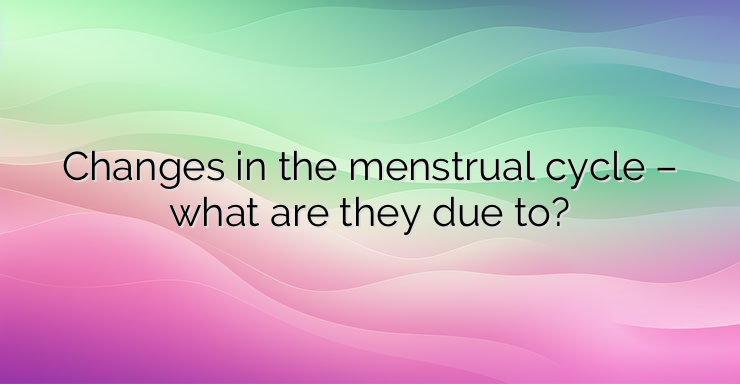Most women have a menstrual period that lasts four to seven days. It usually occurs every 28 days, but a normal menstrual cycle can vary from 21 to 35 days. The average cycle length is 29 days. Many things cause irregular periods such as changes in hormone levels, stress, certain health conditions, medications, and more. A period is still considered “regular” even if it varies slightly from cycle to cycle. Examples of irregular periods include: Periods that occur less than 21 days apart or more than 35 days apart; Missing three or more consecutive periods; Menstrual bleeding that is much heavier or lighter than usual; Periods that last more than seven days; The length of time between cycles varies by more than nine days. For example, one cycle is 28 days, the next is 37 days, and the next is 29 days; Periods that are accompanied by severe pain, cramps, nausea or vomiting; Bleeding or spotting that occurs between periods, after menopause, or after intercourse. It’s normal to have slight variations in cycle length, or to have a period that seems a little heavier or lighter than the last. Menstrual irregularities are quite common, and you don’t have to be able to predict your cycle to the exact day for it to be considered “normal”. What are the conditions associated with irregular periods? Amenorrhea. This is a condition where menstrual periods have stopped completely. Missing a period of 90 days or more is considered abnormal unless pregnancy, breastfeeding, or menopause (which usually occurs between ages 45 and 55) is involved. If menstruation does not occur until age 15 or 16, or within three years of breast development in girls, it may be amenorrhea. Oligomenorrhea. A condition in which the menstrual cycle occurs infrequently, with more than 35 days between periods, or six to eight periods per year. Dysmenorrhea. A medical term for painful periods and severe menstrual cramps. Abnormal uterine bleeding. Abnormal uterine bleeding is bleeding between periods, prolonged bleeding, or an extremely heavy period. There are many causes of irregular periods, ranging from stress to more serious underlying medical conditions. Endometriosis; Pelvic inflammatory disease; Polycystic ovary syndrome; Primary ovarian failure; Disorders of the thyroid gland or pituitary gland; Blood coagulation disorders; Uterine or ovarian cancer; Certain medications, complications of pregnancy or breastfeeding (lactational amenorrhea) can also cause irregular periods; Contraceptive medications; Medications, such as steroids or anticoagulant medications; Miscarriage or ectopic pregnancy. References: Abnormal Bleeding During Your Period. (https://www.aafp.org/pubs/afp/issues/2012/0101/p44.html) Am Fam Physician.2012 Jan The American College of Obstetricians and Gynecologists. Abnormal Uterine Bleeding. (https://www.acog.org/Patients/FAQs/Abnormal-Uterine-Bleeding) US Department of Health and Human Services. Eunice Kennedy Shriver National Institute of Child Health and Human Development. About Menstruation. (https://www.nichd.nih.gov/health/topics/menstruation/conditioninfo) US Department of Health and Human Services. Office on Women’s Health. Menstrual Cycle. (https://www.womenshealth.gov/menstrual-cycle)


Leave a Reply